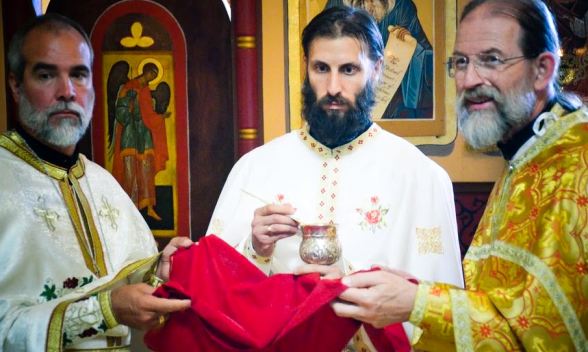
by St. Macarius of Jerusalem, died (ca. 335)
And how shall we draw near to the holy table and the life-giving Sacrament?
Let no one dare to come near to this cup of immortality in double-mindedness, or with lack of faith, or with improprieties, lest the will of God be moved unto wrath on all the earth. And he shall hear the saying:
“Why do you keep recounting My righteousness when you have despised My discipline?” (Ps 50:16-17; LXX 49:16-17).
But, approaching with right steps and true faith, let him be illumined and work out himself salvation for others also.
And how is it proper to administer the Sacrament?
It is necessary to administer the saving Sacrament of the Body and Blood of the Lord with fear and care, and to make right confession of faith, distinct from the ensnaring sacraments of the heretics; lest, through the proximity of Arians,
“the name and truth of God be blasphemed” (Rom 2:24),
according to the Apostle.
And by what guideline shall the offering of the Sacrament be carried out?
The holy bread is to be brought to the table, hot—according to the tradition of the Apostles; and [the cup] incorruptible—without any admixture:
“For we are redeemed not with corruptible things, but with the incorruptible Body [and Blood] of the spotless and unblemished Lamb” (I Pet 1:18-19).
And this shall the deacons prepare, as far as to the table, but that which is performed upon it the priests shall perform.
And how shall the table of the Sacrament be positioned, and (what about) the partitions also?
The table of expiation is behind the veil, where the Holy Spirit descends; and the font is next to it in the same compartment, and out of honor set up on the right hand. And the clergy in their several ranks shall worship (there), and the congregation outside the veil, and the catechumens at the door, listening. Lest there partitions be effaced by encroachments, let each remain in his own station irreproachable.
